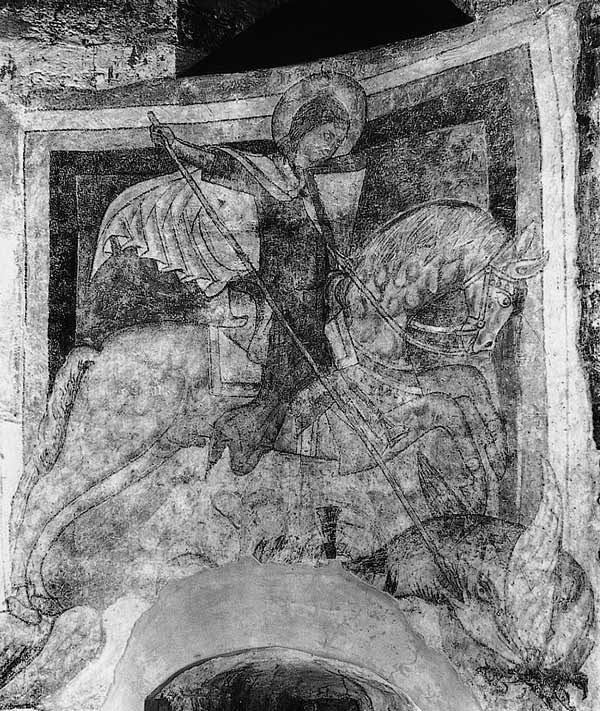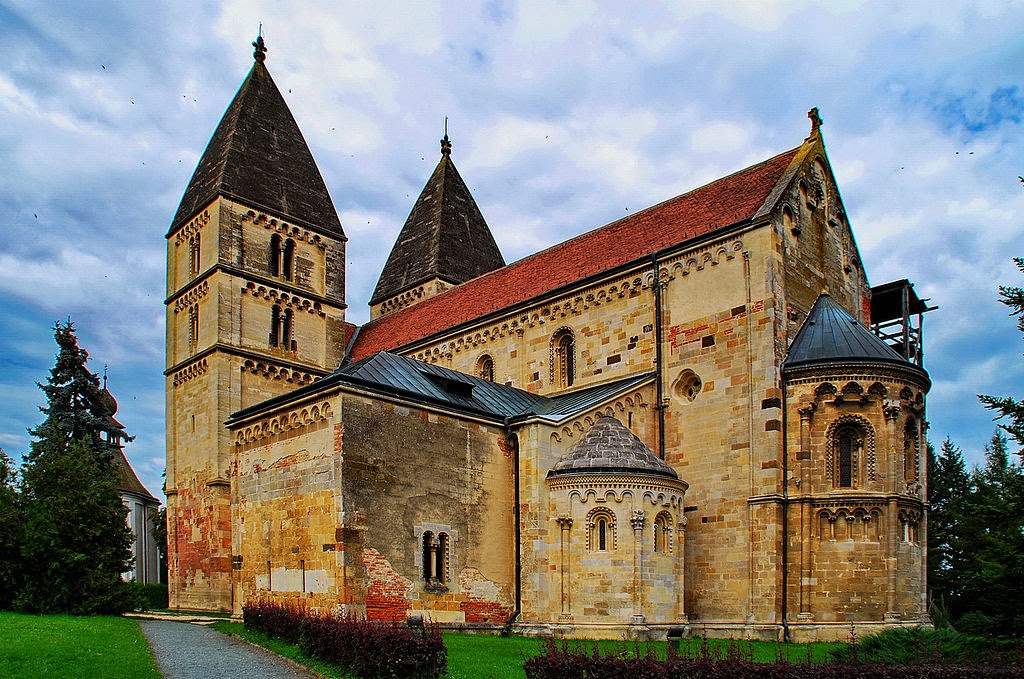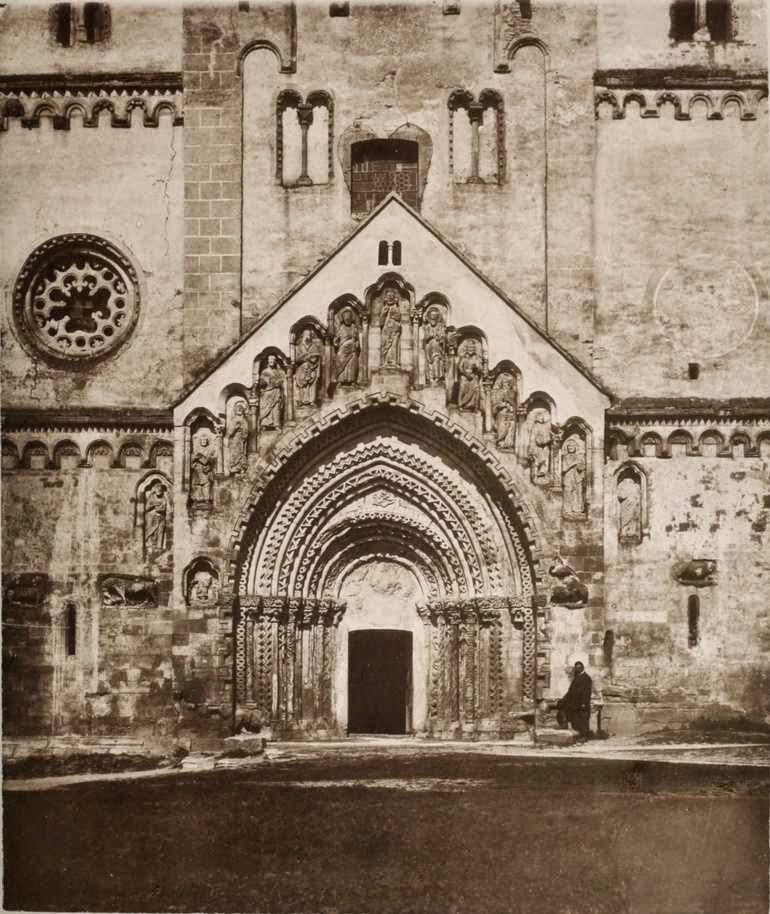Medieval History
- Reconsecration Of Pannonhalma Abbey Church
The medieval church of the Archabbey of Pannonhalma was restored over the last few months, and was solemnly reconsecrated today. The interior reconstruction of the 13th-century abbey church was carried out according to the plans of British architect,...
- Exhibition About The Matthias Church
A major new exhibition about the building and the history of the Church of Our Lady (Matthias Church) of Buda Castle opened at the Budapest History Museum. The Church is a major historic monument of Budapest, part of the Unesco World Heritage site of...
- Reconsecration Of Pannonhalma Abbey Church
The medieval church of the Archabbey of Pannonhalma was restored over the last few months, and was solemnly reconsecrated today. The interior reconstruction of the 13th-century abbey church was carried out according to the plans of British architect,...
- Virtual Visits To Transylvanian Medieval Churches
Gelence (Ghelinta) A new website provides a number of very-well done virtual visits (360° panoramas) to Transylvanian sites. The site, called Treasures of Szeklerland introduces monuments and sites from the eastern part of Transylvania, the territory...
- The Medieval Parish Church Of Pest (part I.)
The Inner City parish church is perhaps the most frequently-seen, yet most overlooked major medieval building in Budapest. Standing in the middle of the city, right next to Elizabeth bridge, modern-day citizens of Budapest zoom by it every day. The church,...
Medieval History
800 Years of Ják Abbey
 |
| Fresco of St. George at Ják, c. 1256 |
This weekend - the weekend after Saint George's Day - mark the 800th anniversary of the foundation of the Benedictine monastery of Ják. It is known that the monastery was established by Márton "the Great" comes from the Ják kindred some time before 1223 (when its abbot was first mentioned). Circumstantial evidence puts the date of this foundation to the year 1214. The abbey church was dedicated to St. George, who was a favoured saint in Hungary during the late Árpádian period, and one particularly liked by the Ják kindred. The abbey church, built in late Romanesque style, was finally dedicated in 1256. Construction thus lasted for a few decades, and was not without interruption. The church is one of the most monumental examples of early thirteenth century monasteries erected by noble families in Hungary - other examples include Lébény or Türje. It was built as a three-aisled basilica, with a massive western part with two towers and a gallery between them. Construction started on the northern side, then continued on the southern side in the second phase. After a change of plan it was decided to vault the entire church, and it was in this phase that the western area was also built. This phase of the work - during the 1230s - is characterised by strong connections with the building workshop of Bamberg cathedral. In the end, the church was not fully finished as planned - work was interrupted either by the Mongol invasion (1241-42), or by the death of Márton comes in 1250. The central and southern aisle of the nave was not vaulted, only covered with a flat wooden ceiling - but the church was considered finished by the 1256 consecration. The western portal of the church, as well as its additional carved decoration, and also its painted decoration make the church one of the most important 13th century monuments from Hungary. The rotunda standing next to the abbey church was also built in the 13th century, around 1260.
 |
| Ják abbey church. From Wikimedia Commons |
The church was restored several times, most extensively between 1896-1906. The massive stone spires of the towers, and the vault of the central aisle were added at this time. Literature on the church is extensive, especially in Hungarian and German. You can find some photos on this website, including images taken before the late 19th century restoration.
More recently, the exterior of the church was cleaned. With the current festivities celebrating eight centuries of the Abbey, the goal of the organizers is to raise money for the restoration of the frescoes in the church, especially the fresco of St. George painted on the wall of the main apse. You can read my study on these frescoes, from a 2001 catalogue dedicated to Benedictines in medieval Hungary (the study is in Hungarian).
 |
| The western portal before 1896 |
Other online resources, mainly in Hungarian:
Technical analysis of the sculptures of the west portal
Photos in Wikimedia Commons and on the website of Pázmány Péter University.
Study and photos on the templom.hu website, data on the m?emlékem.hu website.
- Reconsecration Of Pannonhalma Abbey Church
The medieval church of the Archabbey of Pannonhalma was restored over the last few months, and was solemnly reconsecrated today. The interior reconstruction of the 13th-century abbey church was carried out according to the plans of British architect,...
- Exhibition About The Matthias Church
A major new exhibition about the building and the history of the Church of Our Lady (Matthias Church) of Buda Castle opened at the Budapest History Museum. The Church is a major historic monument of Budapest, part of the Unesco World Heritage site of...
- Reconsecration Of Pannonhalma Abbey Church
The medieval church of the Archabbey of Pannonhalma was restored over the last few months, and was solemnly reconsecrated today. The interior reconstruction of the 13th-century abbey church was carried out according to the plans of British architect,...
- Virtual Visits To Transylvanian Medieval Churches
Gelence (Ghelinta) A new website provides a number of very-well done virtual visits (360° panoramas) to Transylvanian sites. The site, called Treasures of Szeklerland introduces monuments and sites from the eastern part of Transylvania, the territory...
- The Medieval Parish Church Of Pest (part I.)
The Inner City parish church is perhaps the most frequently-seen, yet most overlooked major medieval building in Budapest. Standing in the middle of the city, right next to Elizabeth bridge, modern-day citizens of Budapest zoom by it every day. The church,...
